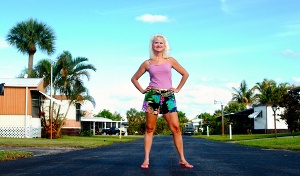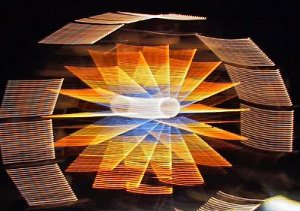Free Photography Bundle ($180 value): PS actions, LR presets, photo overlays, & print templates!
Get it here.
I frequently quiz my friends in the photography business for tips and tricks to share with readers either in person or by email; they’re used to it and, for the most part, are pretty forthcoming. From those efforts I have collected a number of ideas for better composition from people who live the business of photography every day. This exercise was fraught with surprises and the answers were not always what I expected. It’s hard to get photographers to follow the rules, even the ones they set for themselves.
I’ve sifted through the responses and pick the top 10 based on their feedback.
It’s Called The “Rule” of Thirds For a Reason
Rules are meant to be broken in artistic pursuits but some have more staying power and command more respect than others. The Rule of Thirds is one of those with staying power and it was around before photography even existed. The Rule of Thirds really does make your photography better. Break this simple rule at your peril.
Change Your Perspective
There are far too many pictures taken with the camera at eye level in a standing position. It’s boring and a boring perspective is going to produce compelling photographs only with great difficulty. Some photographers will drop down to one knee, which helps a little but three feet is not going to make that much difference. Get creative when it comes to picking angles and don’t be afraid to be a little extreme. I carry a rubber mat so I can lay on the ground and use LiveView to frame so I can get the camera even lower. Try really low angles, get as high as you can safely, move around your subject in both directions.
Get In Close
Unless background adds something to a shot, it shouldn’t be there. In fact, there shouldn’t be any element in your shot that doesn’t improve the quality or you should crop it out. Getting in close forces you to pick a subject. You might think people are a subject but what about that person makes them unique? That unique quality is really your subject. Perhaps someone has attractive eyes or a distinct profile, those become your subjects and the person is just an aside.
Framing
We just talked about getting in close and minimizing background…unless it helps the shot. One of the times background elements can help a shot is when they frame your subject. Oddly, the reason framing works in photography is because it IS blocking out other background elements. A good frame adds context, hides background and gives a photo a sense of layering.
Motion Blur
Motion is difficult to convey in still photography and yet pictures that do it well are so much more alive. Motion blur is surprisingly easy to achieve yet frequently overlooked as a composition technique. Again, it’s all about limiting the background. WIth motion blur you’re changing the background into a smear of indistinct shapes and colors. Your subject doesn’t have to be moving all that fast to get motion blur at lower shutter speeds. A set of ND filters can get your shutter speed down to a point your subject can be walking or jogging and still blur the background.
Great Pictures Tell a Story
Whether you’re adding elements to a photograph or removing them, the object should always be to convey a story with the photo. Sometimes when you’re intertwined with the basics of exposure, framing, and angles it’s easy to forget that object of photography is to communicate visually. Really the only type of picture that bothers me is the classic “hug and mug” where one person is holding the camera at arm’s length with the other around their buddy. It says nothing about who the subjects are or where they are. There’s no story in hug and mug.
Include Some Foreground/Background Objects
Hey, didn’t you just spend three-quarters of this article saying isolate a subject and minimize background clutter and now you’re saying add stuff back in? I can definitely see how it might seem contradictory but adding one or two elements back into a photograph, deliberately, is a lot different than simply allowing background clutter.
Props Are For Amateurs
Ouch. This one hit a little close to home as I think the right prop, tastefully done, can add to a picture. I’m going to go out on a limb here and guess they were talking about props used so often they’ve become a photographic cliche. Things like umbrellas, scarves, a girl holding a flower, funky hats are seen by our pro panel as a crutch for people who lack the ability tease a compelling portrait out of a human subject. If you have to add props to make your subject interesting, then you’re taking pictures instead of seeing people.
Symmetry
The human brain evolved over millions of years to find symmetry a desirable quality. Scientific studies have shown that we rank symmetric faces as more attractive. We like balance in art and life. Yet capturing symmetrical elements in photography can be surprisingly difficult. Deliberately changing the angle to include balancing elements or shooting a portrait with the subject facing the camera would be examples of composition decisions driven by symmetry.
Texture
I find that texture is at the heart of many abstract photos and it’s hard to draw a line between texture and patterns. One could argue that any texture magnified to high enough degree would be considered a pattern. Consequently I lumped both patterns and textures into a single category for tallying results. Texture can come into play in any photo from a landscape to a portrait and adds a “feel” to a two-dimensional photo. Strong side lighting can be employed to enhance and highlight textures with sharp shadows or direct, strong key lighting to soften and de emphasize texture. Texture and patterns speak directly to the subconscious mind and can generate non-directed emotional responses from viewers of which they may not even be aware.
That’s a lot to think about when trying to take pictures and perhaps the best strategy would be working through them one topic at a time. After a while it will become second nature.







